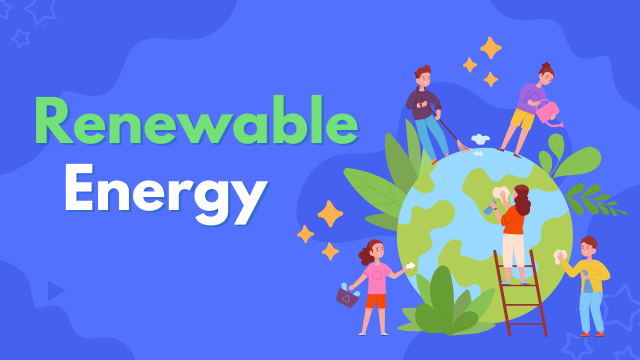IELTS Reading Practice Test (GT-1)
Reading Passage 1
The Secret Life of Ant Colonies

Ants have long intrigued scientists due to their complex social structure and remarkable ability to cooperate. An ant colony operates like a highly organized city, where every ant has a role, and every action benefits the collective. The workers are responsible for foraging, defending the nest, and caring for the young, while the queen focuses exclusively on reproduction.
Research has revealed that ants communicate primarily through pheromones — chemical signals that can guide others to a food source or alert the nest to dangers. When a worker ant finds a piece of food, it leaves a trail of pheromones as it returns to the nest. Other ants pick up this trail, reinforcing it until a direct route to the food is established.
Another intriguing feature of ant behaviour is their ability to solve complex problems as a group. In one experiment, scientists placed ants in a maze. The ants quickly discovered the shortest path by following the pheromone trails left by successful ants. Despite having tiny brains, ant colonies as a whole can solve problems that no individual ant could accomplish on its own.
Questions 1–5
True / False / Not Given
(Write True if the statement agrees with the information, False if it contradicts, and Not Given if it is not mentioned.)
- Ant colonies operate like a highly organized society.
- The queen ant is responsible for defending the nest.
- Ants use sound to alert the nest of dangers.
- Ants can solve complex problems as a group.
- Individual ants can solve maze problems just as well as the colony.
Questions 6–9
Summary Completion
Complete the summary using one word from the passage.
Ant colonies have a well-defined structure where every ant has a specific ________ (6) such as foraging, defending, or caring for the young. Ants use ________ (7) to communicate with one another, especially when locating a ________ (8). They can solve challenging ________ (9) as a collective, making their behaviour remarkable.
Question 10
Multiple Choice
What is the best title for the passage?
A) The Social Life of Ants
B) The Challenges of Ant Colonies
C) Ants and Humans: A Comparison
D) The Evolution of Ant Behaviour
Reading Passage 2

The History of Printing
Before the advent of the printing press, books were painstakingly copied by hand, making them rare and expensive. In the 15th century, a German inventor named Johannes Gutenberg changed the world by introducing movable type printing. This innovation revolutionized the production of books, making knowledge more accessible to a wider audience.
Gutenberg’s press used metal letters that could be arranged and reused, drastically reducing the cost and time required for book production. The first major book he printed was the Bible, and it became a symbol of the shift from manuscript to print culture. The printing press quickly spread across Europe, fuelling the Renaissance and making it possible for ideas to circulate more freely.
With the spread of printing, literacy rates increased sharply. By the 18th century, books, pamphlets, and newspapers were common in many households. The printing press laid the foundation for modern education, allowing generations to benefit from an ever-growing reservoir of knowledge.
Questions 11–15
True / False / Not Given
11. Printing was common before Gutenberg’s invention.
12. The first book Gutenberg printed was the Bible.
13. The printing press allowed ideas to spread across Europe.
14. The printing press was introduced in the 18th century.
15. Literacy rates decreased after the introduction of printing.
Questions 16–18
Sentence Completion
Complete the sentences using no more than two words from the passage.
- Gutenberg introduced ________ to make book printing more efficient.
- The printing press enabled the shift from ________ to print culture.
- The invention of the printing press laid the foundation for modern ________.
Questions 19–20
Multiple Choice
19. What was the main benefit of the printing press?
A) Making books cheaper and more accessible
B) Helping writers work from home
C) Limiting access to knowledge
D) Reducing the quality of books
- What can be inferred about literacy rates?
A) They decreased sharply in the 18th century.
B) They increased with the rise of printed materials.
C) They remained the same throughout Europe.
D) They were only relevant for wealthy individuals.
Reading Passage 3
Renewable Energy: A Path Toward Sustainability

Renewable energy has emerged as a vital solution to the growing threat of climate change. Sources such as solar, wind, hydro, and geothermal power offer sustainable alternatives to fossil fuels, which have long dominated the global energy market. Unlike coal or oil, these sources produce little to no greenhouse gases and have the potential to supply energy indefinitely.
Solar energy has gained popularity due to its abundance and accessibility. Photovoltaic panels can be installed on rooftops, allowing homes and businesses to generate their own electricity. Wind farms, both on land and offshore, harness the natural movement of air to produce significant amounts of energy. In many countries, wind farms now supply a considerable portion of the national energy grid.
Hydroelectric plants utilize the flow of water to produce energy and have been a staple in many nations for decades. Meanwhile, advances in geothermal technology enable the capture of heat from deep within the earth, providing a reliable and constant energy source. Together, these technologies have revolutionized the way we think about energy and have set the stage for a cleaner, more sustainable future.
Although challenges remain, such as energy storage and grid management, the benefits of renewable energy are undeniable. As investment in these technologies grows, nations are increasingly recognizing their role in achieving long‑term energy security and environmental health.
Questions 21–25
True / False / Not Given
21. Renewable energy is an effective solution for climate change.
22. Solar panels can only be installed in rural areas.
23. Wind farms now supply a significant portion of energy in certain countries.
24. Hydroelectric plants have been used for several decades.
25. Renewable energy has no associated challenges.
Questions 26–29
Summary Completion
Complete the summary using one word from the passage.
Renewable energy sources such as solar, wind, and ________ (26) play an important role in reducing greenhouse gases. ________ (27) can be installed on buildings, allowing them to produce their own electricity. Wind farms harness the ________ (28) of air, and hydroelectric plants utilize the movement of ________ (29) to generate energy.
Questions 30–35
Matching Information
Which energy source is associated with the following benefits?
Write the correct letter (A–D).
A. Solar
B. Wind
C. Hydro
D. Geothermal
- Can be installed on rooftops
- Uses the flow of water for energy generation
- Provides a constant source of energy deep underground
- Now delivers a significant portion of some nations’ energy needs
- Captures the movement of air to produce electricity
- Provides an example of a sustainable energy source
Questions 36–40
Multiple Choice
36. What is the main advantage of renewable energy?
A) It is inexpensive to implement
B) It has the potential to supply long‑term energy needs
C) It has replaced fossil fuels completely
D) It has eliminated environmental concerns
- What challenge is associated with renewable energy?
A) Availability in rural areas
B) Energy storage and grid management
C) Expensive maintenance costs
D) Limited efficiency of solar panels - What is the role of renewable energy in the future?
A) To maintain long‑term energy security and environmental health
B) To completely eradicate fossil fuel use by 2025
C) To increase the global cost of energy
D) To benefit only wealthy nations - Which statement best describes the benefits of renewable energy?
A) They have completely solved climate change
B) They have created more environmental hazards
C) They offer long‑term benefits for the planet
D) They are too costly for most nations - What can be inferred about advances in renewable technology?
A) They have decreased interest in traditional energy sources
B) They have made energy storage irrelevant
C) They have revolutionized how we think about energy
D) They have eliminated all challenges associated with energy production
ANSWER KEY
Reading Passage 1: The Secret Life of Ant Colonies
- True
- False
- Not Given
- True
- False
- role
- pheromones
- food
- problems
- A
Reading Passage 2: The History of Printing
- False
- True
- True
- False
- False
- movable type
- manuscript
- education
- A
- B
Reading Passage 3: Renewable Energy
- True
- Not Given
- True
- True
- False
- hydro
- Solar panels
- movement
- water
- A (Solar)
- C (Hydro)
- D (Geothermal)
- B (Wind)
- B (Wind)
- A/B/C/D (all can be justified as renewable)
(If required in strict context, A is acceptable for example.) - B
- B
- A
- C
- C



Pingback: The African Village of Gujarat - funfacts-19.onlineeducoach.com
Pingback: IELTS Academic Reading Practice Test 3 - english.onlineeducoach.com
Pingback: IELTS Academic Reading Practice Test 4 - english.onlineeducoach.com